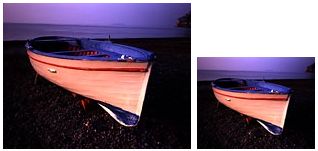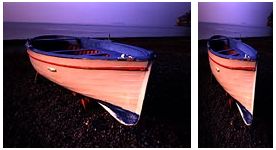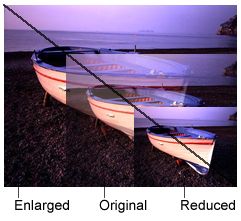Ad Layout
How art scales
 |
|
|
|
|

The fastest way
to increase sales!
Participate in this award-winning, newspaper-specific
ad sales course on-site or in a Webinar.
|
| • |
Get past upfront stalls and objections
without any pushing |
| • |
Make the account believe he really needs
you |
| • |
Get better information from your prosepct |
| • |
Develop quick ad strategies that work the
very first time |
| • |
Eliminate size, frequency, content, cost
and most other objections before they ever arise |
| • |
Get dramatic responses for all kinds of
advertisers |
| • |
Never have to push an
advertiser to run again
click here
|
|
 |
|
|
| |
|
|
|
When you're gathering up the artwork that the client has
given you and you are sitting down to create the layout, you really need
to have an idea of how that artwork will fit into the ad.
Keep in mind how the artwork will look when it's either
enlarged or reduced to fit in your ad and make sure that your original
artwork will scale proportionally to fit in the space you've designated.
Proportional scaling
Proportional scaling is when both the width and the depth of the artwork
are reduced or enlarged by the same percentage. This is easily done by
the artists.

An example of proportional scaling. Very good.
Anamorphic scaling
Anamorphic scaling is when the width and depth of the artwork is scaled
by different percentages. For example, you may think it's a good idea
to make the image long and narrow down one side of the ad, however, if
the image you're working with is not long and narrow to begin with, then
this could severely distort the image. Imagine a standard 3x5 or 4x6 photo
of your family or friends. Now imagine trying to squeeze that image to
fit into a space 1 inch wide by 10 inches deep. The figures in the photo
would compress so much that they would be unrecognizable to you. The same
theory applies to photos of the advertisers' products.

An example of anamorphic scaling. Very, very, bad.
How will my artwork scale?
Here's an easy way to see what dimensions your artwork
would naturally fit into. See the scaling diagrams on the right.
First, make a copy of the original artwork and set the original aside
in a safe place. Using the copy only, draw a line from one corner to the
corner diagonally across from it. Then by drawing a horizontal line and
a vertical line from any one point on the diagonal line, you will see
a box that the artwork could be scaled to fit into proportionally. You
can then use this sheet as a guide for drawing the area on your layout
sheet and the artists will be able to see exactly where and how big you
would like the artwork to appear.
| Determining
how your artwork will scale proportionately:
Illustrated at right is an easy way to see how your
artwork will scale.
1. Make a copy of your original artwork. Set the original
aside.
2. Using the copy only, draw a line between the two
diagonal corners.
3. Draw a horizontal and vertical line from any one
point on the diagonal and you'll have a scaled version of the original. |
 |
Next: The
model release form
|


